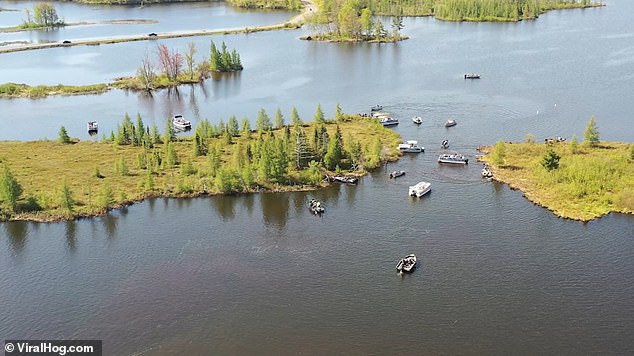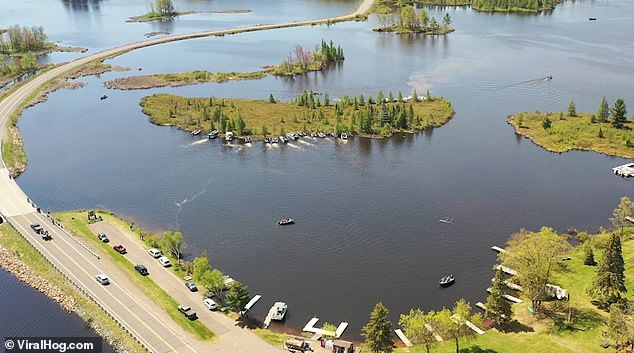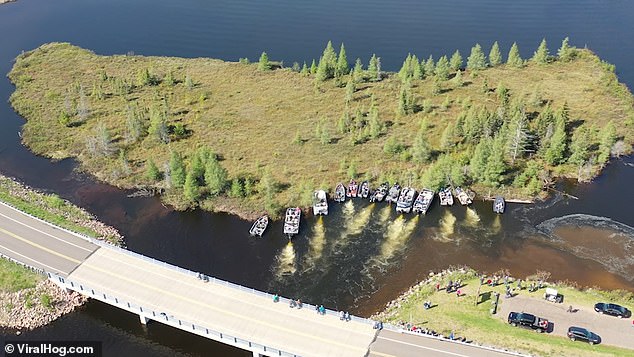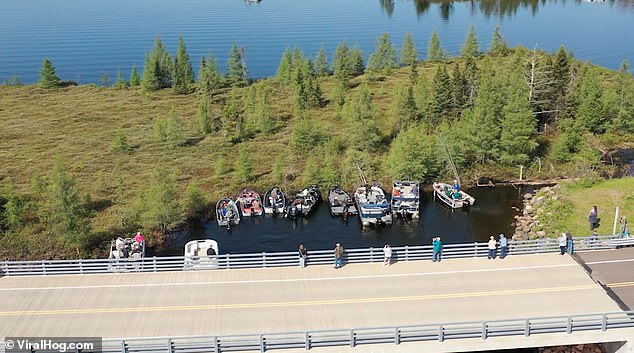Incredible footage shows boats pushing a FLOATING ISLAND around a lake
Lake Chippewa in Wisconsin is home to a giant floating island where locals regularly have to navigate their boats.
The island must be moved almost annually so that it does not float too close to a bridge that provides passage between the east and west sides of the lake.
Incredible video footage of the ritual, which takes place almost every year, shows locals working together in their boats to push the island away from the bridge.
It is one of several floating islands in the lake, which were created in 1923 after a dam was built on the Chippewa River and flooded 6,070 acres of land. Discover Wisconsin reveals.
The lake’s unique floating islands began as patches of peat swamp rising from the land beneath the lake. Over time, vegetation began to grow on these islands and soon an entire ecosystem began to flourish.
Lake Chippewa in Wisconsin is home to a giant floating island where locals regularly have to navigate their boats

The island must be moved almost annually so that it does not float too close to a bridge that provides passage between the east and west sides of the lake
Since the lake, also known as the Chippewa Flowage, some of the largest floating swamps split into smaller islands before eventually disappearing.
The floating island that proves troublesome for locals is known as the ‘Forty Acre Bog’ and is crowned by tamarack larch trees.
Last year it took more than 20 boats to come together to push the island away from the bridge.

Above is a still from incredible video footage of the island relocation ritual, which takes place almost every year

The lake’s floating islands began as patches of peat swamp rising from the land beneath the lake, which was created in 1923 after a dam was built on the Chippewa River and flooded 15,000 acres of land.
Denny Reyes, a nearby resident and owner of The Landing Restaurant and Resort told Northern news now: ‘It’s one of the first things you look at when you come in here in the morning: where is the swamp?’
Greg Kopke, a local homeowner, told the publication that the swamp doesn’t always move, but if it does, it needs to be moved to the “right spot,” otherwise residents should expect to try to push it away again within a few days.
The Lake Chippewa Flowage website notes that even though the lake was formed a century ago, “new swamps can form at any time.”
It says: ‘A phenomenon known as ‘mud swamps’ can appear at any time, although they most often appear in the fall.

The floating island that proves to be tricky for locals is known as the ‘Forty Acre Bog’ and is crowned by tamarack larch trees

Last year it took more than 20 boats to come together to push the island away from the bridge
‘They either rise to the surface temporarily and then slowly sink back to the bottom, or they remain permanently on the surface and eventually develop plants and trees.’
It adds: ‘(The islands) can range in size from the size of a car park to several hectares.’
To keep tabs on the whereabouts of the Forty Acre Bog, the Facebook group Lake Chippewa Flowage Resort Association was formed.
On a more positive note, the floating islands are home to several animal species that are cared for by local wildlife authorities.
And the lake itself is filled with attractions, proving popular for fishing trips, boat days and wild swimming.
